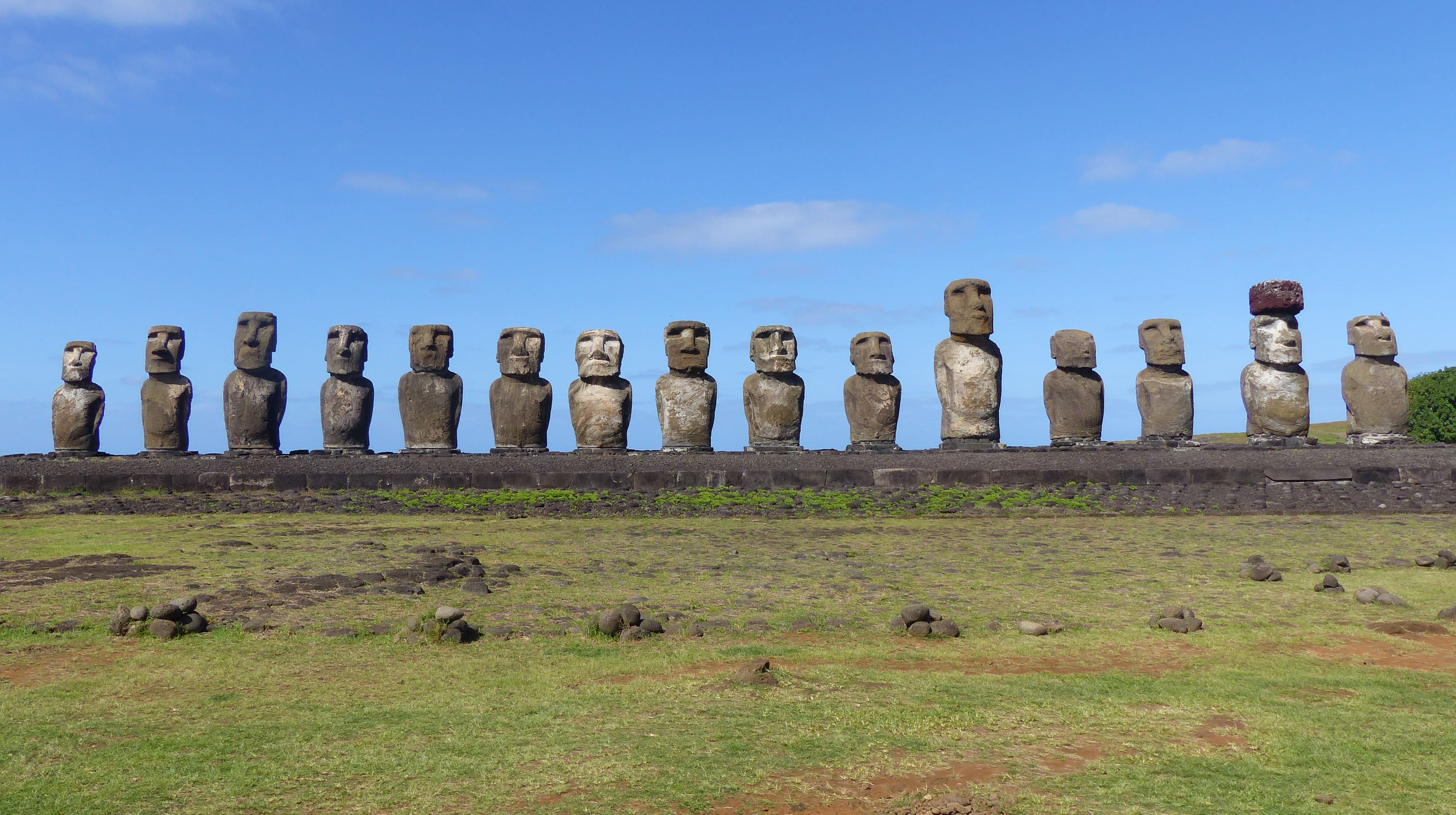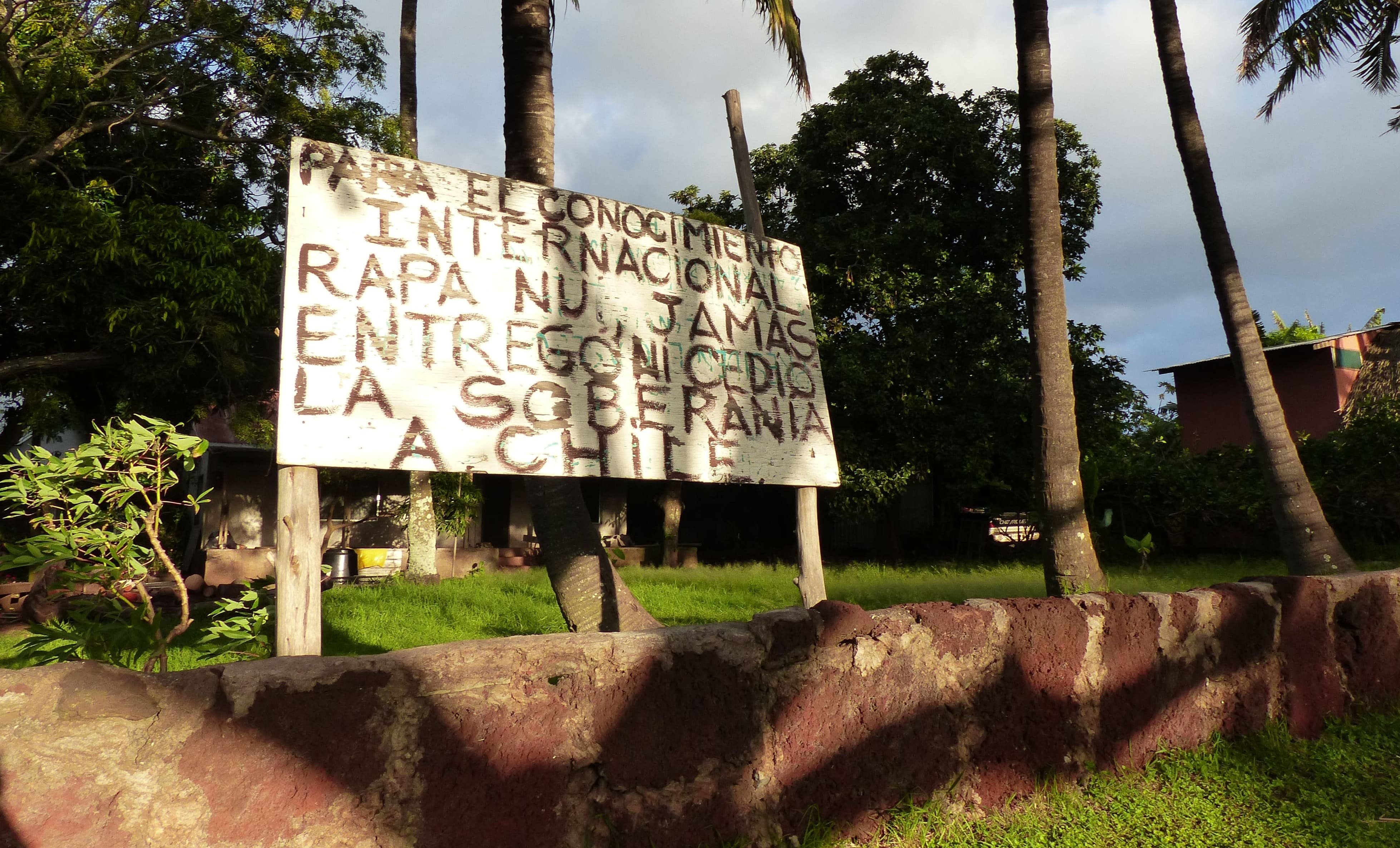News
Rapa Nui people strive to save language from extinction
Rapa Nui, located in the eastern corner of the so-called Polynesian Triangle, lies in the middle of the Pacific Ocean, although administratively it belongs to Chile. Almost 3,800 kilometres separate the Chilean capital Santiago and Hanga Roa, the only town on the island, where most of the islanders live. Of the 8,000 inhabitants who live there, according to the last official census of 2017, 60% are mainland Chileans and the remaining 40% are Rapa Nui.
“Our language is only spoken here; today it is at risk of survival, in a rather fragile situation because it is not being passed on to the younger generations,” explains María Virginia Haoa, one of the founders, in 2004, of the Rapa Nui Language Academy. Almost all public spaces, shops, businesses, banks, and institutions are signed in Spanish.
According to the latest UNESCO studies, carried out in 2017, only 10% of children under 18 speak and understand this language, while 40 years ago that percentage reached 76%. “At the end of the 1960s, Chilean state institutions (civil registry, ministries, government, town hall, etc.) were installed on the island, a very large contingent of people from the mainland arrived, and a very strong process of mixing was triggered,” notes historian and expert on this indigenous territory, Cristián Moreno Pakarati.
 The moai are likely the best-known symbol of the Rapa Nui culture. / Photo: Meritxell Freixas.
The moai are likely the best-known symbol of the Rapa Nui culture. / Photo: Meritxell Freixas.The arrival of the Chileans accelerated a kind of “linguistic colonization.” In his opinion, “for people from the mainland, there is no need to learn the local language because the Rapa Nui are bilingual and can communicate perfectly well in Spanish; even if the majority of members of a group speak Rapa Nui, they end up using the language that everyone understands, even if it is that of the minority, as a matter of diplomacy.”
Education and language immersion
Hanga Roa has four schools —two public and two charter schools— and several kindergartens. Only one of the municipal schools offers a language immersion programme for students aged 4 to 9, the rest of the classes are bilingual and Rapa Nui is studied 4 hours a week (spread over two different days). For the youngest children, from 2 to 5 years old, there is only one centre, Hōŋa'a Re'o Rapa Nui —“Rapa Nui Language Nest”—, created and managed by the NGO Hōŋa'a Re'o Rapa Nui.
“We have groups of children who have finished pre-school and have continued the immersion programme at school,” says Samuel Atán Tuki, the nest’s current director. Only these children use the local language on a daily basis: “They interact with each other in Rapa Nui, but when they are with children from other programmes, they switch to Spanish,” he adds.
The continued coexistence of the two languages with a clear dominance of Spanish worries language activists, academics, and experts. Cristián Moreno wonders “what will happen when these children who now speak the language fluently enter school and find themselves with classmates who do not speak Rapa Nui. What will be left of all this in 10 or 15 years if it is not spoken on a permanent basis?”.
Teachers are also concerned about the lack of staff and preparation for teaching: “There are few people who know how to teach the language, and the government should invest more effort in pedagogy and language teaching,” says Moreno. For María Virginia Haoa, who is also a Rapa Nui language teacher for both children and teachers, there is an additional problem: “Teachers’ salaries do not match the high cost of living on the island, and young people are deciding on more profitable professions, such as those linked to tourism.”
Haoa gives as an example the school that offers the language immersion programme: “It has 40 teachers, but only five of them give classes entirely in Rapa Nui to participating students; four others teach a few hours a week to students who are not part of the programme, and the rest are Spanish speakers.” The lack of professionals fluent in the language also affects bureaucracy: “There is a lack of translators for official documents to ensure the presence of the language in all government institutions,” she adds.
Hurdles
Rapa Nui Mayor Pedro Edmunds Paoa declared the local language official through a municipal ordinance four years ago. Despite the symbolism of the initiative, the norm has legal and economic limitations to achieving its vehicular or social use. According to him, the City Council has done “many efforts” to promote language policies in areas such as the media, dubbing, schools, and kindergartens. He estimates that the investment exceeds 3.5 million dollars a year: “Despite this, we have not managed to ensure that the language is safeguarded and appreciated by the community,” he regrets.
Edmunds —who has ruled the territory since 2012, but in total has governed in seven terms, with the help of both the centre-left and the centre-right— regrets that in all these years the Chilean state has only collaborated in a “very superficial” way and has not declared Rapa Nui an official language of the island “neither through actions nor investment.” He criticizes the fact that initiatives to promote and protect the language are managed through calls for programmes and projects from the Ministry of Education, which the islanders must apply for every year.
Samuel Atán Tuki agrees that “there is a lack of resources to support language immersion projects” because, as they are excluded from the formal education system, there are no public bodies to fund them. “We have maintained relations with the Ministry to implement various programmes, but we have our worldview that does not fit in with the school curriculum that is proposed to us; that is why we have not yet entered the official framework,” the teacher says.
 A sovereigntist graffiti in Rapanui. Image: Meritxell Freixas.
A sovereigntist graffiti in Rapanui. Image: Meritxell Freixas.Tradition vs. modernity
Another factor complicating language survival has to do with the process of adaptation to the current reality: “It is very difficult to communicate in Rapa Nui today because it is a language that was functional in the world in which these people lived before, but it is difficult to describe the objects of modernity,” explains Cristián Moreno. According to him, there are certain limits “imposed by an imagined tradition” that seeks to preserve “the authentic character” of the language and make it difficult to incorporate new words to replace words from Spanish, English, French, or other linguistic borrowings. “It is a permanent tension between tradition and modernity which, as a solution, uses the words of other languages pronounced with its own phonetics,” the historian adds.
For Haoa, who chaired the Academy for seven years and is still a member today, “if the meaning of the old concepts is understood, it is not wrong to use them,” but she believes that the community must be open to the adaptation of words and neologisms “without losing the Polynesian essence and roots,” because, she says, “the language mutates over time.”
Apart from the Academy, a Commission for the Structuring of the Rapa Nui Language also exists in the institutional sphere, which tries to disseminate the grammatical and orthographic norm, but according to Cristián Moreno, it has opted for an “impractical” transliteration because it uses complicated symbols that are often not found on the keyboards of ordinary devices: “It ends up becoming one more impediment,” he stresses.
Shared experiences
Rapa Nui activists and advocates working to strengthen and revitalize Rapa Nui have sought advice and assistance on several occasions from neighbouring peoples, such as the Maori of New Zealand or the Hawaiians, who have been providing education in their native languages for decades: “We have shared strategies on how to socialize our respective languages, work in schools, develop didactics and methodologies, etc.,” says Haoa. “From them, we have imitated the idea of language nests,” she says, referring to kindergartens adapted to the language immersion model.
Mayor Edmunds is convinced that Rapa Nui culture “is alive” and that “the desire to promote and preserve it exists,” in the community, but he also believes that “there is a lack of involvement and responsibility” on the part of the Chilean state to achieve this. As the rest of the native peoples of the South American country do, he demands that “educational programmes should provide for both the official language, which today is Spanish, and Rapa Nui, which should also be made official.” Progress and steps like this one will determine whether the Hōŋa'a Re'o nest will continue to grow and many more will emerge.
